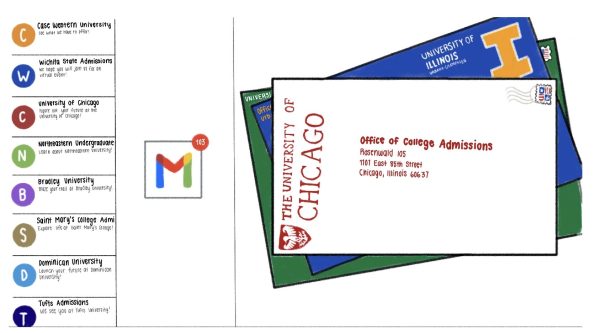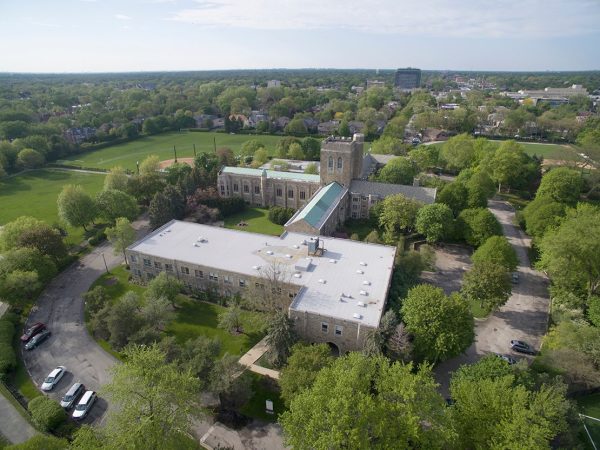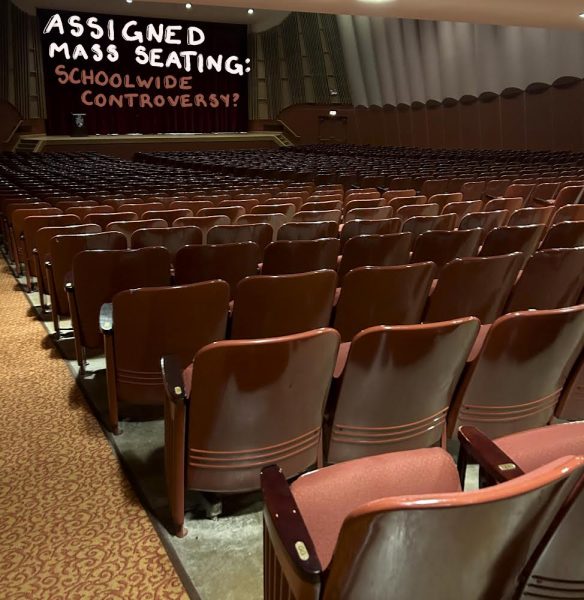10 Year Challenge: College Acceptance

Illustration by Eva Homberger
The best classes, a multitude of extra-curriculars, an interest in community service, an amazing test score, and a perfect gpa. These are just a few of the factors that parents and their students focus on when creating the picture-perfect college application. It is no secret that gaining admittance into a university seems to have become increasingly more difficult over the past ten years as schools get better, students get smarter, and the competition gets stronger. However, is it really getting more difficult to gain admittance into college or are students only making it harder on themselves and the top institutions are benefiting from it?
While acceptance rates like 19.8% from well known schools like Notre Dame may make it appear like college acceptance is going down, in reality this is not the case. Throughout the United States, the only schools accepting less than 50% of their applicants are the nation’s top institutions. When people claim that college acceptance is declining, they are only talking about the top few institutions in the country whereas, if they had really studied the data, these people would come to discover that the acceptance rate of the majority of schools in America is not declining. A major contributor to this information epidemic are the lists published each year by The U.S. News and World Report ranking colleges from best to worst. Every year when these rankings come out, students and their parents eagerly scroll through the list and choose which colleges to apply to based on the schools that are ranked the highest. However, college Counselor Mr. Richard Borsch raises a question about this method stating, “Do the rankings really measure absolute value?” How is a student supposed to know whether or not a school is right for them when they are simply picking the ones with the highest academic standing in order to impress those around them? Just because a school is ranked as the top business school of the year does not mean that is is the best business school for that particular student. Students and their parents need to thoughtfully evaluate each school and the benefits that it could provide for their specific path.
Another contributing factor in the illusion of the decrease in college acceptance is the Common Application. This fairly new way of applying to college allows a student, with the click of a button, to send the same application out to over 500 schools. Before the Common App was invented, students had to do a substantial amount of work for each application. Because of this, students would only apply to around 6 schools that they were actually considering attending in the fall. However, because of the substantially lightened workload of college applications due to the Common App, students are now not only applying to their top 6 schools, but they are also applying to an extra 6 or more schools as back up schools that, in reality, they would not consider attending. Because of the Common App, universities have begun receiving way more applications than in the past. This causes their acceptance rates to appear to shrink when in reality, the school is still accepting the same amount of students that it did before, but the applicant pool is growing.
Despite discussing the many negatives that have become prevalent in the college acceptance process over the past decade, Mr. Borsch believes that some positives have come out of the changes brought about through college admissions. He explains, “While these [topics listed above] may appear to be negative in some ways, a positive reason for increased numbers of applications is the emphasis on recruiting underprivileged students, such as students of color, economically challenged students and families, first generations of students, and women.” Because of the wealth of information offered to students through these many outlets, underprivileged students are able to explore their options and decide which course of action is best for them and their families. Students are able to explore financial aid and the requirements to get into the college of their choice without having to make the trip to the college’s campus to collect information, rather they can retrieve it though their computer or mailbox. Furthermore, Mr. Borsch continues to say that “within the last decade, women have come to comprise the majority of students in college-a historical first.” This just goes on to prove even further the positive side of the wealth of information that has become accessible to everyone.
Although college acceptance rates are not actually decreasing in the number of students admitted into a certain college class, the numerical value that represents the acceptance rate continues to go down as opportunities such as the Common Application and the perceived glory of attending a top-ranked school become more and more important to students and their parents. As the applicant pools for universities around the country continue to increase, the acceptance process will get harder and students will continue to suffer at the hands of other students who choose to apply to multiple schools simply because they can. In order to control the chaos that applying to college has become, students and their parents need to evaluate their choices of which schools they wish to apply and to choose from the heart rather than the rankings.












